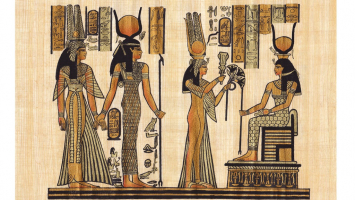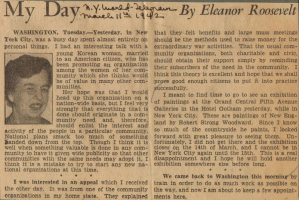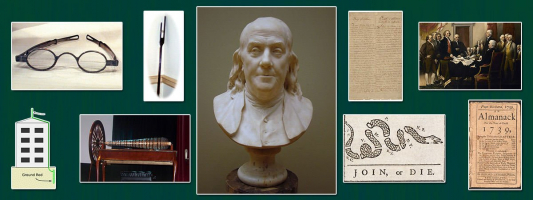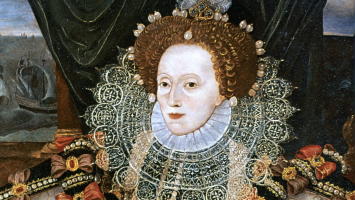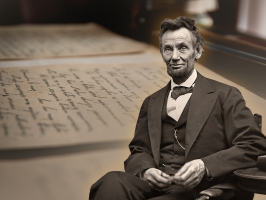Top 10 Major Accomplishments of Rosa Parks
Rosa Parks is regarded as one of the most significant individuals of the twentieth century as a result of her contributions to the American civil rights ... read more...struggle. Parks began as an activist in the 1930s and left an indelible legacy throughout her life until she died in 2005. The following are major accomplishments of Rosa Parks.
-
Rosa Parks-The mother of the civil rights movement, born Rosa Louise McCauley, an American civil rights activist whose refusal to give up her seat on a public bus sparked the 1955–56 Montgomery bus boycott in Alabama, which kindled the American civil rights movement.
Though desegregating Montgomery's municipal buses was a tremendous accomplishment, Parks was not content. She observed that the United States continued to fail to respect and defend the lives of Black Americans. Martin Luther King, Jr., who had brought the Montgomery bus boycott to national attention, was slain less than a decade after Parks' lawsuit was won. Parks' biographer Kathleen Tracy remarked that Parks would not claim she was happy in one of her final interviews: “I do the very best I can to look upon life with optimism and hope and looking forward to a better day, but I don’t think there is any such thing as complete happiness. It pains me that there is still a lot of Klan activity and racism. I think when you say you’re happy, you have everything that you need and everything that you want, and nothing more to wish for. I haven’t reached that stage yet.”
Rosa Parks relocated to Detroit with her husband and mother in 1957, where she served on the staff of Michigan Congressman John Conyers, Jr. from 1965 until 1988. She stayed involved in the NAACP, and in her honor, the Southern Christian Leadership Conference established the Rosa Parks Freedom Award. In 1987, she cofounded the Rosa and Raymond Parks Institute for Self-Development to equip young people with job training and to teach them about the history of the civil rights struggle. She was honored with various honors, including the Presidential Medal of Freedom (1996) and the Congressional Gold Medal (1999). Rosa Parks: My Story (1992), her autobiography, was co-written with Jim Haskins. She is one of the most influential figures of 20th century.
Video: Studies Weekly - Rosa Parks 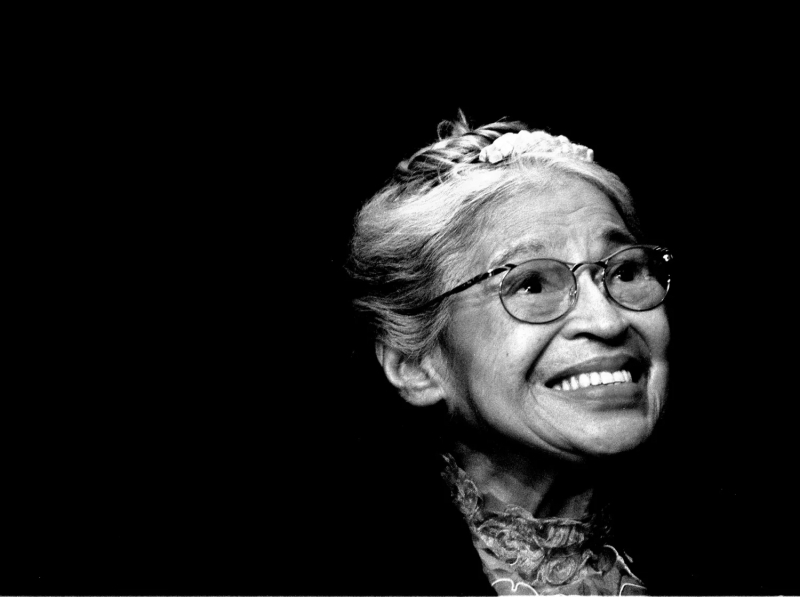
Photo: Haiku Deck - The mother of the civil rights movement -
Rosa Parks left Montgomery Fair, the department store where she worked, on December 1, 1955, and boarded the same bus she did every night. She sat in the "black area" in the back of the bus, as she always did. When the bus was packed, the driver told Rosa to give up her seat to a white passenger. Rosa has experienced this countless times before. The same bus driver had thrown her off the bus for the identical crime in 1943. She refused again and was detained by cops. She was penalized after being found guilty of breaking the segregation legislation.
Only after speaking with friends and family did she decide to approach the NAACP and offer to be a test case. This was a courageous act because she knew it would lead to persecution by white authorities. Parks, for example, was fired from her tailoring position at Montgomery Fair right away.
She served as secretary to Edgar Nixon in the Montgomery division of NAACPin 1943, reconnecting with her former classmate Johnnie Carr. She worked with E. D. Nixon on cases including police brutality, rape, murder, and prejudice. The Montgomery NAACP defended and hired paroled Scottsboro Boy Andy Wright in 1946. Parks attended Ella Baker's leadership training program the same year. E. D. Nixon was elected Alabama state president of the NAACP in 1947, and Parks was appointed as the first state secretary in 1948.
Photo: Pinterest - National Association for the Advancement of Colored People 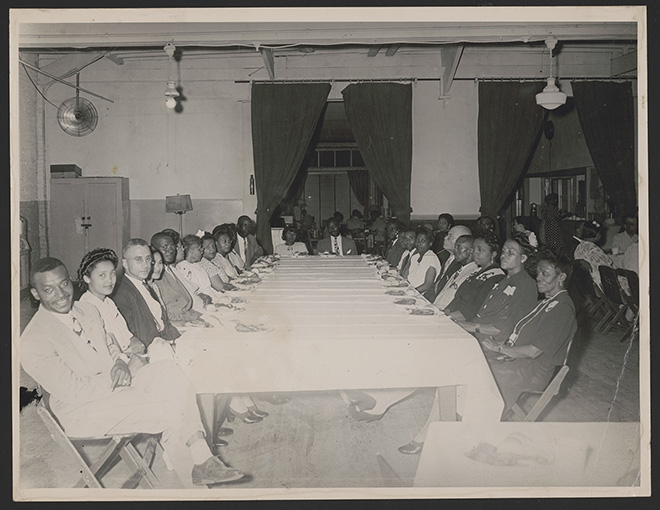
Photo: The Guardian - Rosa Joins the NAACP's Montgomery Branch -
Rosa Parks met and fell in love with Raymond Parks, a politically engaged hairdresser, in 1931 – the "first true activist I ever met." Raymond was fighting to liberate the Scottsboro Boys, nine young men arrested for riding the railroads, falsely convicted of rape, and condemned to death in 1931 Alabama. Rosa and Raymond married in December 1932, "right in the heart of the Scottsboro Boys rescue effort." So she began her political involvement and wedded life by assisting Raymond in freeing and defending the nine young men. They both went to meetings. This was risky job. The group would convene at strange hours, such as dawn and midnight. “Not many men were activists in those days either, because if it was known that they were meeting, they would be wiped right out. But it didn’t bother me being married to Parks. He was doing the same thing before we got married, and I knew how dangerous it was.”
Raymond visited the Scottsboro lads in prison and informed Rosa that he would "never sleep well until they’re free." She helped defending the Scottsboro Boys, and it is one of major accomplishments of Rosa Parks. The police searched for people to frighten as the Scottsboro organization grew. Raymond's associates were both slain. Two policeman on motorcycles rode back and forth in front of the Parks' house one day. Rosa and a buddy were terrified. Raymond returned home safely, entering through the back door. "At least they didn’t get him that time," she was relieved.
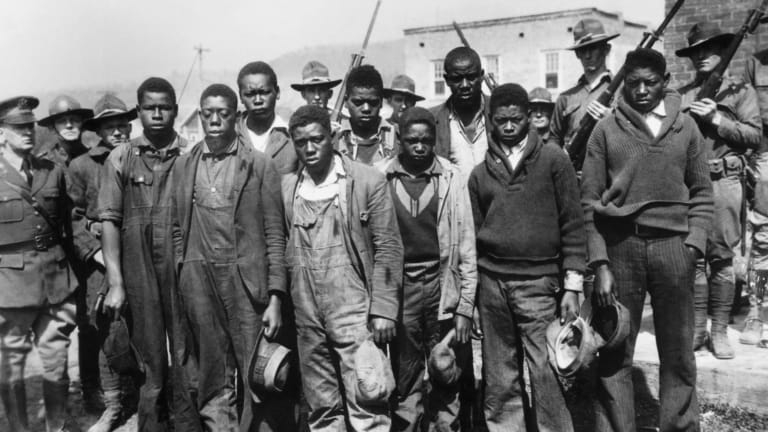
Photo: History.com - 9 Scottsboro Boys 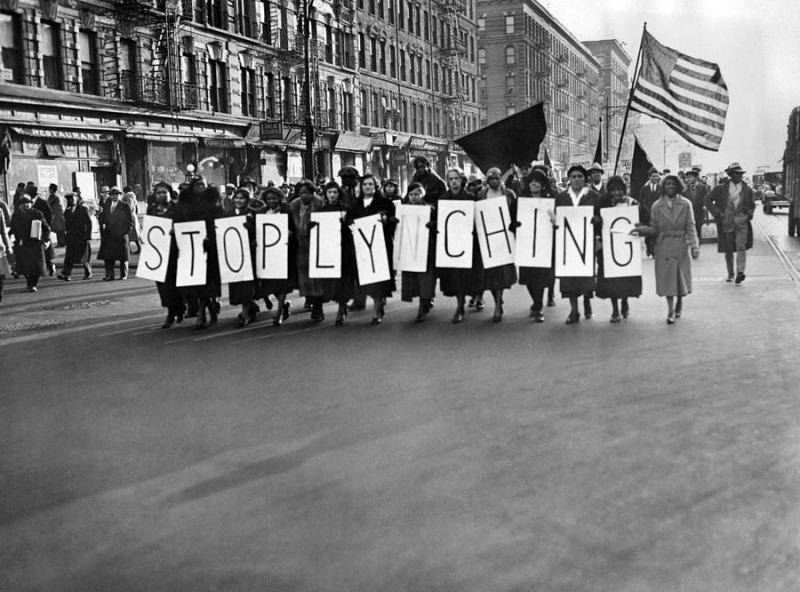
Photo: Fine Art America - Harlem Protests The Scottsboro Verdict Photograph by Everett -
Rosa Parks' remarkable achievement is she sought justice for Recy Taylor.
On September 3, 1944, after midnight, six white male assailants stopped Recy Taylor, Fannie Daniels, and West Daniels on their way home from church in Abbeville, Alabama. Taylor was identified by the assailants, who stated she was sought for a crime. Taylor had spent the entire day with the Daniels and hence could not have been involved in the crime as they alleged. They grabbed Taylor, transported her to a remote location, and raped her at gunpoint. They left Taylor to wander home blinded after the attack. Taylor was discovered by her father and a deputy sheriff; she then described the automobile to the officer. Hugo Wilson was recognized as the driver by the Sheriff's Department and arrested. Wilson identified the other guys engaged in the assault and was released by the Department. Taylor and her husband sought charges, but the case was rejected by an all-white grand jury on October 4, 1944.
After hearing of Taylor's assault, Rosa Parks came to Abbeville, Alabama in 1944. Parks agreed to meet Recy Taylor, her husband, and her daughter at a remote cabin because of the fear of police interference. Parks documented Taylor's notes of the attack and delivered them to African-American activists in Montgomery when Deputy Sheriff Lewey Corbitt stopped their covert meeting. Rosa Parks teamed with the Southern Negro Youth Congress to publicize Taylor's case, drawing on years of engagement in which she supported the Scottsboro Boys, battled against the Ku Klux Klan, and joined the NAACP.
Rosa Parks formed the Alabama Committee for Equal Justice for Mrs. Recy Taylor's Rights with the support of E.D. Nixon (the Head of the Alabama Brotherhood of Sleeping Car Porters), Rufus A. Lewis (funeral home director and Alabama State football coach), and E.G. Jackson (editor of the Alabama Tribune). By 1945, the case had acquired national attention, and the committee had created sections in New York, Denver, Chicago, and Detroit.
Photo: National Museum of African American History - Recy Taylor, Rosa Parks, and the Struggle for Racial Justice Video: Democracy Now! - “The Rape of Recy Taylor”: How Rosa Parks Helped a Sharecropper Report Her Assault & Seek Justice -
In February 1987, Mrs. Rosa Parks and Ms. Elaine Eason Steele co-founded the Rosa and Raymond Parks Institute for Self Development in honor of Raymond Parks (1903-1977). It is the living legacy of two people who have dedicated their lives to civil and human rights.
On December 18, 1932, Raymond Parks married Rosa McCauley. He worked as a barber in Wedowee, Randolph County, Alabama. He lacked formal schooling but possessed a passion for knowledge and a no-nonsense approach to life. He backed his wife's "Quiet Strength" campaign and urged young people to receive a decent education in order to support themselves and their families, as well as to remove prejudice in this country.
Elaine Eason Steele met Mrs. Rosa Parks while working in a sewing factory as a high school student in the early 1960s. Following graduation, she offered to work with Mrs. Parks and assist her in any way she could. Like the daughter she never had, she became a terrific friend. Elaine was also aware of Mrs. Parks' desire to memorialize Mr. Parks, as well as her love and devotion to youngsters. They founded the Rosa and Raymond Parks Institute for Self Development in 1987.

Photo: Library of Congress - Rosa and Raymond Parks Institute for Self Development 
Photo: LinkedIn - Rosa and Raymond Parks Institute for Self Development -
On October 20, 1983, in Dearborn, Michigan, 18 women were recognized, including Isabella Baumfree (Sojourner Truth), a former slave who became a nationally known crusader for human rights; Anna Howard Shaw, a minister and physician who succeeded Susan B. Anthony as president of the National American Women's Suffrage Association; and Lucinda Hinsdale Stone, the state's foremost spokesperson for coeducation during the last half of the nineteenth century. Among the recent honorees were Martha Griffiths, a congresswoman who was the major sponsor of the ERA in that legislature and the first woman elected lieutenant governor in Michigan, and Rosa Parks, widely regarded as the mother of the modern civil rights movement.
Rosa Parks was inducted into the Michigan Women's Hall of Fame in 1983 for her civil rights contributions and achievements. Parks had joined the Detroit branch of the Women's International League for Peace and Freedom (WILPF) a decade previously, which was a step toward broadening her work beyond civil rights to include women's equality. She has also had a major roadway in Detroit named after her, as well as a scholarship fund to assist Michigan students who show potential for the type of courage and leadership Mrs. Parks shown in Montgomery in 1955.
Photo: 517 Magazine - Michigan women honored in Hall of Fame 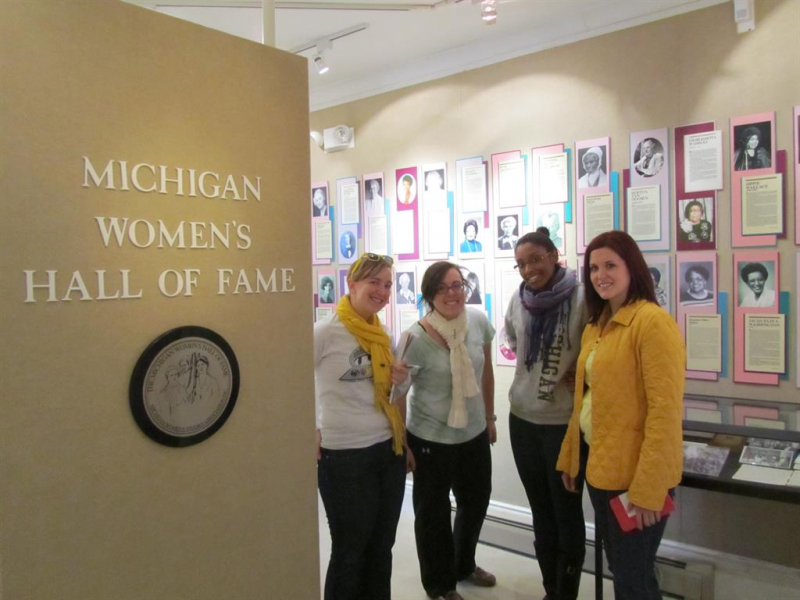
Photo: Pure Michigan - Michigan women honored in Hall of Fame -
She wrote an autobiography titled Rosa Parks: My story. Rosa Parks discusses the civil rights struggle and her active involvement in it in this plain, engaging autobiography. Her commitment is remarkable, and her narrative is unforgettable.
Many readers of this gripping autobiography will be aware with Rosa Parks' most famous incident: on December 1, 1955, she refused to give up her seat on a Montgomery bus to a white individual.
This book presents a framework that will allow its readers to place this momentous occasion in a larger context and realize the immense impact it had on one lady and a whole nation. Long before Parks's fight against racial segregation, her "very strong sense of what was fair" prompted her to initiate her anti-injustice crusade. She discusses her early family life and education, her run-ins with dismissive white youngsters, her romance and marriage to Raymond Parks, and her active engagement in the Montgomery NAACP and the civil rights movement in a vivid anecdotal style. The straightforwardness and truthfulness of this heroic woman's voice heightens the impact of these terrible events. Some readers will be astounded by Parks' personal experiences of brutality against black people, while others will be moved by her endless energy and bravery.
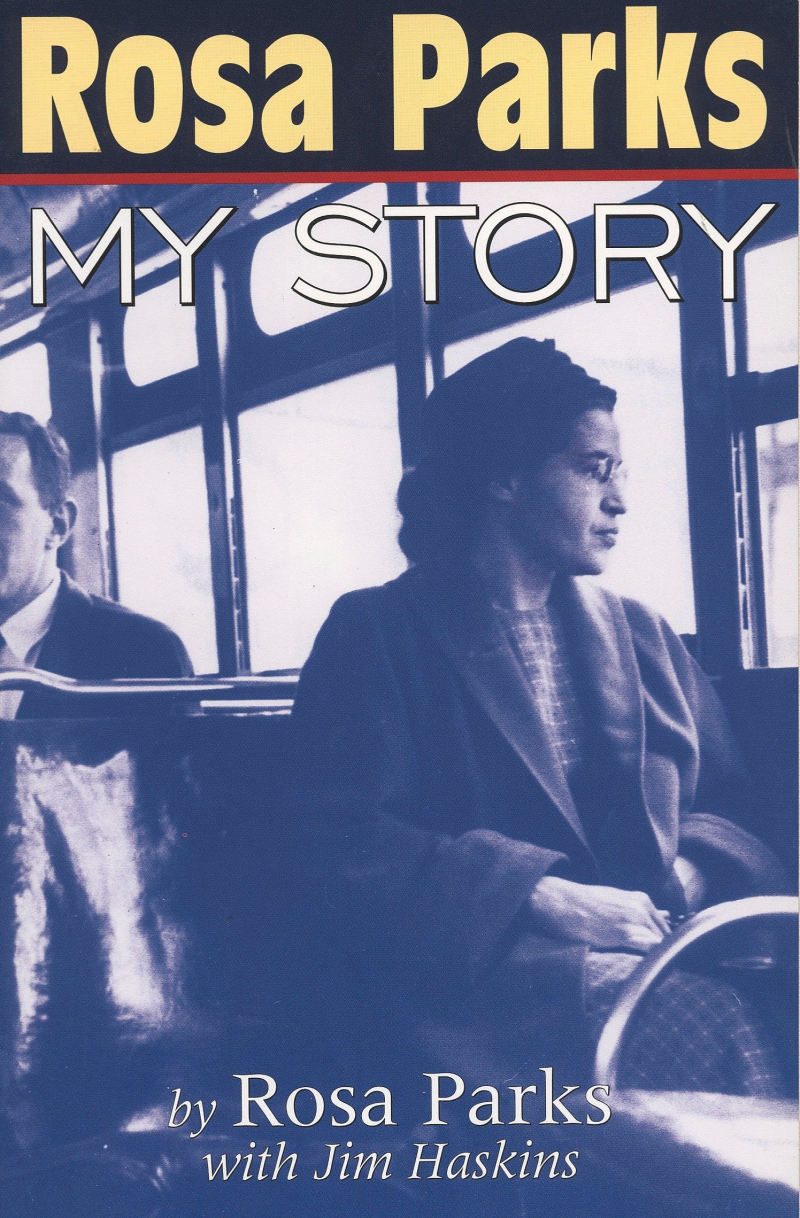
Photo: Amazom.com - Rosa Parks: My Story by Rosa Parks 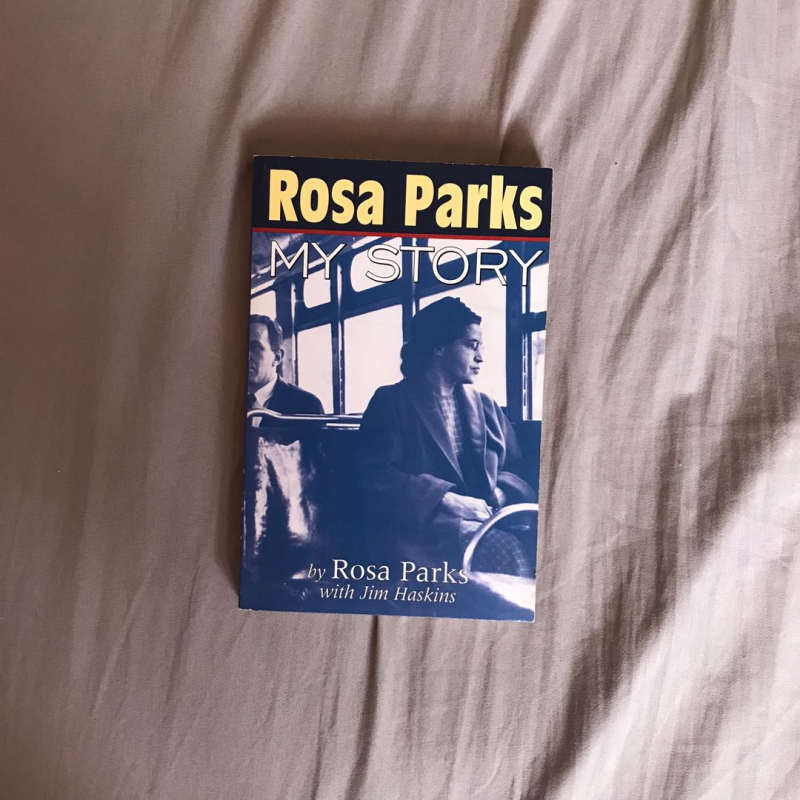
Photo: Biblio.co.nz - Rosa Parks: My Story by Rosa Parks -
On September 9, 1996, Rosa Parks was awarded the Presidential Medal of Freedom by President Bill Clinton. Although the connection between Rosa Parks and a President is weak, this is the highest distinction conferred by the United States Government on a citizen
Originally, the Medal of Freedom was given to military members and those participating in battle. It evolved into an award that acknowledged an act that contributed to the security of the United States, and in 1963, it was elevated to the highest honor for people who contribute "to the quality of American life."
Rosa Parks, a black seamstress, disobeyed a municipal segregation policy on December 1, 1955, by refusing to give up her seat on a city bus to a white man in Montgomery, Alabama. She was supposed to relocate to the rear of the car. Her efforts provoked a bus boycott, one of the highlights of the civil rights struggle, which finally resulted in public transit integration. Furthermore, her acts sparked a wave of protest that eventually resulted in the repeal of numerous segregation laws throughout the South.
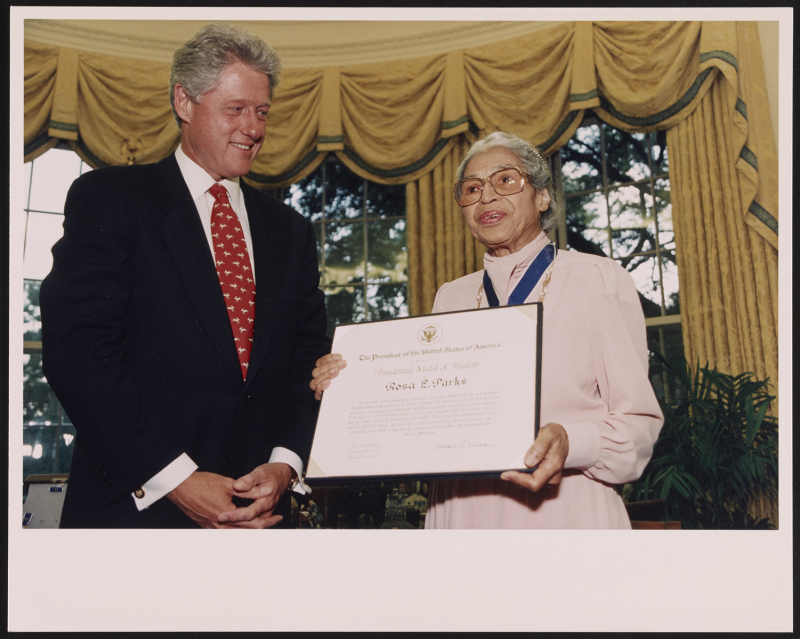
Photo: Wikipedia - Presidential Medal of Freedom 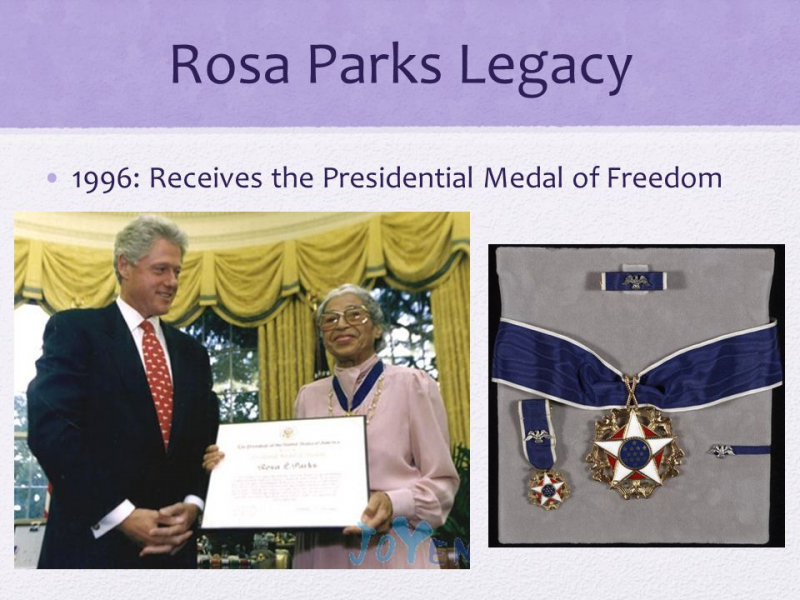
Photo: SlidePlayer - Presidential Medal of Freedom -
Montgomery established a city law in 1900 that required bus passengers to be separated based on race. The rear rows were usually allotted to the blacks. Rosa Parks boarded a bus on December 1, 1955, and sat in an unoccupied seat in the first row of rear seats reserved for blacks. The bus quickly became overcrowded, and as several white passengers stood, the driver, James F. Blake, ordered blacks to vacate their seats to make room for the white passengers. Three black men agreed, but Rosa Parks did not. Parks was arrested and charged with violating segregation laws after police were called. Parks, contrary to popular belief, was not physically exhausted and was able to leave her seat. She refused to give up her seat because of her race, as was required under Montgomery law at the time.
Four days after the event, African Americans in Montgomery boycotted the city's bus service in a protest movement against the city's racial segregation policy in the public transportation system. The Montgomery bus boycott is widely considered as the first large-scale anti-segregation demonstration in the United States. She has become an international symbol of fighting apartheid. It is one of the major accomplishments of Rosa Parks.
Photo: JSTOR Daily - Fighting Apartheid with Sports 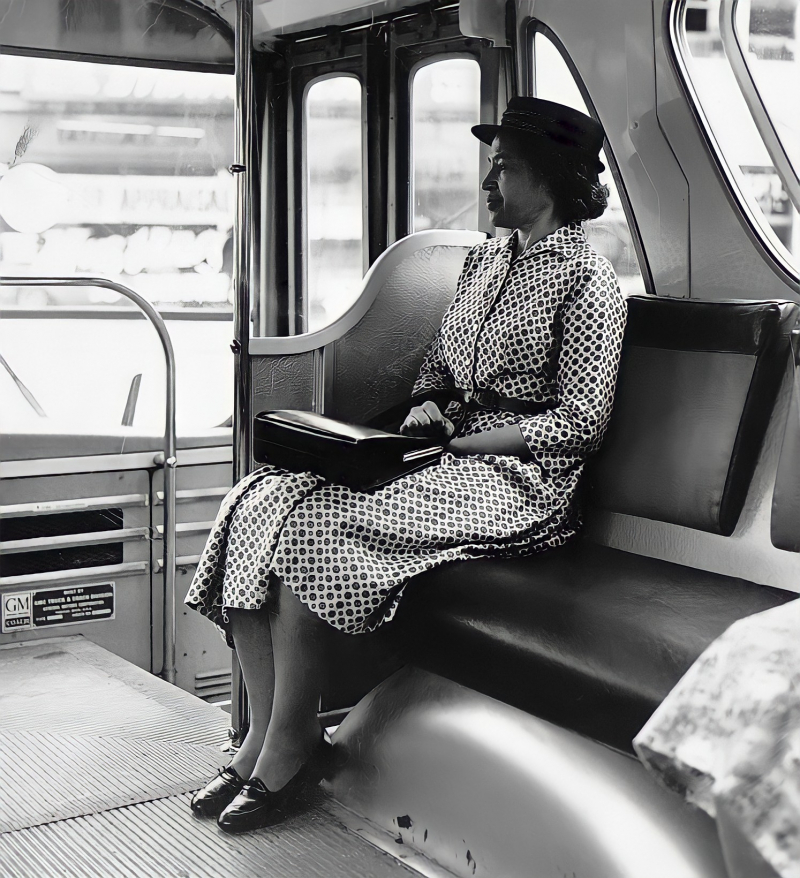
Photo: UAW - Rosa Parks -
Rosa Parks statue is located in the United States Capitol's National Statuary Hall.
The Rosa Parks statue, authorized by Congress in 2005, is historically noteworthy as the first full-length statue of an African American person in the United States Capitol. It is also Congress's first statue commission since 1873. It follows the bust of Martin Luther King Jr., which was also commissioned by Congress and unveiled in 1986, and the bust of Sojourner Truth, which was revealed in 2009. The Rosa Parks statue is not part of the National Statuary Hall Collection, despite its presence in the United States Capitol.
Rosa Parks is shown in the same clothes she wore on the day she was arrested in the monument. Based on photographic evidence, she is depicted wearing a circular brimless hat, spectacles, a fabric coat over her dress, laced shoes, and she is holding the handle of her pocketbook. She is sat atop a rock formation, almost as if she is a part of it, signifying her legendary refusal to give up her bus seat. Her upper body is turned slightly to the right. Her head is erect, her back is straight, and both her wrists and ankles are crossed; this position, together with the expression on her face, implies inner strength, dignity, resolution, and determination, all of which are traits of her long-standing devotion to civil rights work.
The statue stands about nine feet tall, including the pedestal. The bronze figure weighs 600 pounds, and the granite pedestal, which has been partially hollowed out on the interior, weighs 2,100 pounds. The pedestal is composed of Raven Black granite and simply etched with her name and birth and death dates, "Rosa Parks/1913–2005."Video: PBS NewsHour - Rosa Parks Immortalized With Statue at U.S. Capitol 
Photo: Architect of the Capitol - Rosa Parks Statue Joins U.S. Capitol Art Collection















